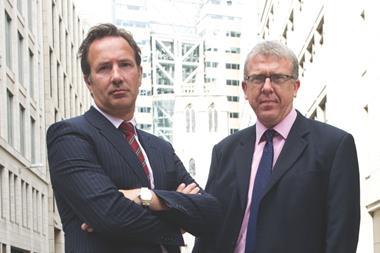Conmen know the industry’s limits and are ready to exploit them
Fraudsters patrol the gaps and cracks in any system. They constantly seek to exploit opportunities to defraud the industry.
The Insurance Fraud Enforcement Department (IFED) got off to an auspicious start with three sets of arrests in its first few days of operation. All of us in the sector should applaud this escalation in the fight against the fraudster. But what are we as an industry doing to ensure there are fewer gaps for fraudsters to take advantage of?
In 2005, Lord Goldsmith, then attorney general, prophetically said the UK must take a holistic approach to fraud, and warned of the dangers of creating silos. He recognised that silos would provide weaknesses for fraudsters to exploit. He reminded us that there was no silver bullet to solving the fraud problem but, in essence, guided us toward a silver key to, in some way, begin to unlock it. That key is communication.
Over the last decade or more the industry has taken tremendous strides forward to defeat fraud. As the industry has recognised the ‘size of the prize’, the fraud detection sector has grown exponentially. But as a result, it could be argued that the sector has become more and more compartmentalised.
The scale and scope of anti-fraud organisations is significant. In addition to police-led operations and national groups such as the Insurance Fraud Bureau (IFB) and the Insurance Fraud Investigators Group (IFIG), there are many different fraud forums around the UK. Of course, these groups all have a place and are doing important work in fighting fraud, but many are regionalised and as a consequence we in the industry face the risk of becoming segregated.
Sharing information
So how do we ensure that data, new ideas and best practice are cascaded to all? Thankfully, to a large extent, there is recognition that we must share information. The IFIG is perhaps a market-leading example of this in action, even bringing together organisations both private and public. But we should be mindful of Lord Goldsmith’s words: an uncoordinated approach creates silos leading to the very gaps and cracks he warned us about.
In addition, while there is no doubt competitive advantage has played a key role in the speed of growth and success of our industry, we must also be aware of the gaps and cracks competition can create. There must be as few barriers to the sharing of relevant information on fraud as possible.
There is now a role for a central collator of best practice and strategies, similar to the way the Insurance Fraud Register operates for data.
I know that deep down insurers, adjusters, solicitors and other suppliers recognise there is no longer a ‘them and us’ in developing fraud solutions, so could a national insurance fraud collator resource help? Whether this is established through poll agreement, or simply taken on by an existing group, taking action now will be an important step forward in making a truly collaborative and holistic stand against fraudsters.
Neil Daniel is head of counter-fraud and investigation services at GAB Robins

Insurance Times has this year launched the Fraud Charter 2012 initiative, sponsored by AXA Personal Lines, to boost the industry’s response to fraudulent activity. Click here to find out more and complete our survey.
Hosted by comedian and actor Tom Allen, 34 Gold, 23 Silver and 22 Bronze awards were handed out across an amazing 34 categories recognising brilliance and innovation right across the breadth of UK general insurance.












































No comments yet